3B.3 Additional costs and/or cost offsets
Page last updated: September 2016
Information Requests
- Compare the administration profiles of the proposed medicine and the comparator, identify differences, and note if this will result in additional costs or cost offsets (Subsection 3B.3.1)
- Compare the safety management profiles of the proposed medicine and the comparator, identify differences in resource use with monitoring or managing adverse events, and note if this will result in additional costs or cost offsets (Subsection 3B.3.2)
The nature of additional costs and/or cost offsets will differ across submissions. Two common areas for these are costs associated with administration and costs of managing adverse events; however, this does not preclude other possible cost offsets. Justify any other additional costs and/or cost offsets in terms of how they are realisable and/or patient relevant, and show how they differ between the options being considered in the cost-minimisation analysis.
3B.3.1 Comparison of prescribing and administration profiles
Identify differences in the costs of prescribing or administering the medicines.
If the proposed medicine and its main comparator are available in different forms (eg tablets, injections, implants, infusions), the different modes of administration might have cost consequences. In this case, identify the types of other health care resources affected, estimate the extent to which the quantity of each type of resource provided would change (in its natural units of measurement) were the proposed medicine to be listed, and multiply by the appropriate unit costs.
See also the Manual of resource items and their associated costs for further detail on costing administration-related resource use.
3B.3.2 Comparison of safety and toxicity management profiles
Only use the cost-minimisation approach where the proposed medicine has a safety profile that is superior (preferably) or noninferior to the main comparator.
Identify any differences in the costs of monitoring or managing adverse events associated with the medicines.
If the proposed medicine is demonstrated to be no worse in terms of effectiveness, but to have a superior safety profile to the main comparator, a price advantage for the proposed medicine over its main comparator could be sought on the basis of cost offsets because of reduced costs of monitoring for, or managing of, adverse reactions. Use clinical trials and the recommendations in the Australian product information to support a claim that monitoring costs are reduced.
Where safety profiles are similar, but the proposed medicine simply has a reduced magnitude of adverse effects (severity or incidence), present a thorough description of the quantified differences in safety, with a justified estimate of any corresponding resource-use implications.
Where the adverse effect profiles of a proposed medicine and its main comparator are different in nature, a cost-effectiveness or cost-utility analysis is likely to be preferred (Section 3A). However, a cost analysis may be acceptable to quantify a claim that the cost offsets from the reduction in health care resources required to treat the adverse events are sufficient to reduce the incremental cost to zero or a negative value.
See also the Manual of resource items and their associated costs for further detail on resource use and costing associated with monitoring and adverse effects.


